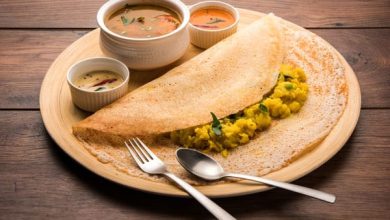
Fungal acne, also known as pityrosporum folliculitis or Malassezia folliculitis, is a skin condition that resembles acne but is actually caused by an overgrowth of a yeast-like fungus called Malassezia. Unlike traditional acne, which is caused by bacteria, fungal acne develops when this yeast overgrows in hair follicles, causing small, itchy, acne-like pimples on the skin.
Fungal acne is caused by an overgrowth of Malassezia yeast on the skin, particularly in areas with high sebum production such as the face, chest, and back. It usually appears as small, uniform bumps that may be itchy or tender. These bumps can be mistaken for traditional acne, but they often do not respond well to acne treatments containing benzoyl peroxide or salicylic acid.
Treatment of fungal acne usually involves antifungal medications, such as topical or oral antifungal agents prescribed by a dermatologist. Keeping the affected area dry and avoiding oils or products that may promote yeast growth are also important. Preventing fungal acne requires good skin care practices, such as using gentle cleansers, avoiding heavy moisturizers or oils that may clog pores, and keeping the skin dry and cool, especially in humid environments.
DIY fungal acne treatment, treat fungal acne at home, home remedies for fungal acne, natural remedies for fungal acne, how to treat fungal acne naturally, fungal acne DIY treatment, tea tree oil for fungal acne, apple cider vinegar for fungal acne, aloe vera for fungal acne, fungal acne treatment guide, coconut oil for fungal acne, natural antifungal skin care, Malassezia folliculitis treatment, pityrosporum folliculitis treatment
Tea Tree Oil
Tea tree oil has natural antifungal properties that may help fight Malassezia yeast. Dilute tea tree oil with a carrier oil (such as coconut oil or jojoba oil) and apply it to the affected areas with a cotton swab. Be careful with concentrations and frequency to avoid skin irritation.
DIY fungal acne treatment, treat fungal acne at home, home remedies for fungal acne, natural remedies for fungal acne, how to treat fungal acne naturally, fungal acne DIY treatment, tea tree oil for fungal acne, apple cider vinegar for fungal acne, aloe vera for fungal acne, fungal acne treatment guide, coconut oil for fungal acne, natural antifungal skin care, malassezia folliculitis treatment, pityrosporum folliculitis treatment
Honey
Honey has antimicrobial and anti-inflammatory properties that can help soothe fungal acne. Apply raw honey directly to the affected areas, let it sit for about 10-15 minutes, then wash off with warm water.
DIY fungal acne treatment, treat fungal acne at home, home remedies for fungal acne, natural remedies for fungal acne, how to treat fungal acne naturally, fungal acne DIY treatment, tea tree oil for fungal acne, apple cider vinegar for fungal acne, aloe vera for fungal acne, fungal acne treatment guide, coconut oil for fungal acne, natural antifungal skin care, malassezia folliculitis treatment, pityrosporum folliculitis treatment
Apple Cider Vinegar
Apple cider vinegar has antifungal properties and can help restore the pH balance of the skin. Mix equal amounts of apple cider vinegar and water, apply it on the affected areas with the help of a cotton ball and leave it for a few minutes and then wash off. Use a more diluted solution if you have sensitive skin.
DIY fungal acne treatment, treat fungal acne at home, home remedies for fungal acne, natural remedies for fungal acne, how to treat fungal acne naturally, fungal acne DIY treatment, tea tree oil for fungal acne, apple cider vinegar for fungal acne, aloe vera for fungal acne, fungal acne treatment guide, coconut oil for fungal acne, natural antifungal skin care, malassezia folliculitis treatment, pityrosporum folliculitis treatment
Aloe vera
Aloe vera gel is known for its soothing and healing properties. Apply fresh aloe vera gel directly to the affected areas and let it sit until dry, then wash off. This can help reduce inflammation and promote healing.
DIY fungal acne treatment, treat fungal acne at home, home remedies for fungal acne, natural remedies for fungal acne, how to treat fungal acne naturally, fungal acne DIY treatment, tea tree oil for fungal acne, apple cider vinegar for fungal acne, aloe vera for fungal acne, fungal acne treatment guide, coconut oil for fungal acne, natural antifungal skin care, malassezia folliculitis treatment, pityrosporum folliculitis treatment
Coconut Oil
Coconut oil has antifungal properties and can be applied directly to the affected areas. Take a small amount and massage it gently on the skin. Leave it on for at least 30 minutes before washing it off. Use coconut oil cautiously if you have oily or acne-prone skin, as it can cause acne.





